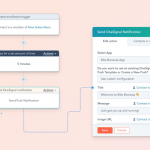- Like
- SHARE
- Digg
- Del
- Tumblr
- VKontakte
- Flattr
- Buffer
- Love This
- Save
- Odnoklassniki
- Meneame
- Blogger
- Amazon
- Yahoo Mail
- Gmail
- AOL
- Newsvine
- HackerNews
- Evernote
- MySpace
- Mail.ru
- Viadeo
- Line
- Comments
- Yummly
- SMS
- Viber
- Telegram
- JOIN
- Skype
- Facebook Messenger
- Kakao
- LiveJournal
- Yammer
- Edgar
- Fintel
- Mix
- Instapaper
- Copy Link
Project managers are responsible for the planning, execution, and delivery of projects.
At SaaS Metrics we know that delivering products on time and under budget requires creating a project management schedule ahead of time. Likewise, making sure your deliverables are high-quality requires pre-planning. That’s where the quality management plan comes in handy.
Project managers need to develop a quality management plan to define deliverable standards and create quality assurance processes. Quality management plans are im-por-tant. But how to create these and what elements to include?
What Is The Purpose Of Project Quality Management?
Quality management refers to all tasks involved in overseeing product development to maintain a predetermined level of excellence.
Quality management planning (QMP) makes sure project deliverables meet all standard requirements to keep customers and stakeholders happy. That’s where enterprise resources planning comes in place.
In most cases, quality management tasks are executed during the project life cycle. Implementing quality monitoring and assurance during the production process makes it easier to catch and remedy any mistakes while they are still small.
Project managers execute quality management by creating and implementing a quality management plan, including measures for quality control and improvement.
Principles of Quality Management
The International Organization for Standardization outlines seven universal principles of quality management.
Each principle helps businesses and project managers understand the objectives and qualities of a successful quality management system (QMS).
In other words, your quality management plan should incorporate all seven principles.
Let’s take a look at what each principle means.
- Customer Focus – The goal of quality management is to meet and exceed customer needs and expectations.
- Leadership – Quality management requires leadership buy-in and top-down commitment to excellence.
- Engagement of people – All team members should be involved in quality management.
- Process approach – Creating processes leads to consistent and predictable quality.
- Continuous improvement via technology – Businesses must always seek to improve the quality of products and processes.
- Evidence-based approach – Data-driven decisions are more likely to generate positive results as long as governance happens strategic.
- Relationship management – Long-term success depends on nurturing important relationships, such as those with suppliers. Just make sure a well-thought logistic plan is put in place before you start sales.
Now that you’re familiar with the essential quality management principles, let’s look at how to put these into action with a quality management plan.
How To Write a Quality Management Plan
A quality management plan defines quality standards and outlines the processes you and your team will use to assess, control, and improve quality.
The creation of the quality management plan falls on the project manager. However, managers should consult with others when creating quality requirements and quality policies.
Who you consult depends on your organizational structure and the size and scope of your project.
Here are some typical candidates for input:
- Entire team or selected team members;
- Quality assurance stakeholders;
- Operations team;
- Legal team;
- Marketing team;
- Customer representatives.
Team members involved in production can inform you of the current quality control activities and which corrective actions they take to rework a part of a project.
On the other hand, representatives from legal and marketing can help you make sure your quality standards align with industry regulations and strategic business objectives.
Finally, your customer representatives, or even people on your sales team, provide insight into which quality criteria matter most to your buyers.
What To Include in a Quality Management Plan
So, you’re ready to speak with your team members.
By now, you might think, “What exactly do I need to include in my quality management plan?”
You can adapt your quality management plan template to suit your objectives and your project processes. However, a standard quality management plan should include the following five elements.
- Definition of project requirements;
- Deliverable standards;
- Criteria for customer satisfaction;
- Criteria for stakeholder satisfaction;
- Quality management system.
Let’s inspect each section.
Definition of Project Requirements
Your quality management plan begins with an outline of the project requirements. By project requirements, we mean the deliverables, deadline, and budget.
You need to know what you’re creating, how much time you have, and how much money you can spend on the project.
Understanding your project requirements gives you the parameters for your quality management plan.
In particular, the processes you define later on in the plan need to adhere to the project’s schedule and budget.
Deliverable Standards
Once you define your project requirements, you need to create your deliverable standards. In this stage, you’ll select your quality assurance metrics.
Ask yourself:
- What measurements will we monitor to manage quality control?
- How do we define acceptable quality for our product?
If you’re manufacturing a physical product, this step is known as creating an Acceptable Quality Level (AQL).
The Acceptable Quality Level is the maximum number of faults you’ll accept in a sample production batch. If you take a sample of your product and the number of faults exceeds your AQL, that batch must be rejected.
Acceptable Quality Level standards vary by product type and industry.
Although your industry standards are a good place to start, consider your customers’ acceptance criteria and your high-level business goals.
Criteria for Customer Satisfaction
Customer focus is one of the principles of quality management, thus it should be addressed in your quality management plan. You need to understand how your customer defines an acceptable product.
But that’s not all.
If you want to be competitive, it’s not enough to meet customer expectations. To meet a standard of excellence, you must ask, “How do we exceed our customers’ expectations?”
There are a number of tactics and resources you can use to understand your customers’ needs. You can choose to conduct primary research, secondary research, or a combination of the two.
Understand customer acquisition cost.
Primary research refers to any type of feedback you receive directly from customers. These sources include focus groups, customer interviews, survey submissions, and customer reviews.
In particular, customer complaints offer insight into the standards that matter most for your customers. Complaints also show you where you’re not meeting customer expectations.
Secondary research includes information about your customers collected by another organization, such as government reports, studies, and research papers.
Although primary research gives you the best insights, secondary sources can be an excellent way to see how you compare to industry-wide trends and standards.
Criteria for Stakeholder Satisfaction
Often in business, your projects will have internal stakeholders. In other words, someone else in the organization depends on your deliverables.
Internal stakeholders might include the:
- Project manager (yourself);
- Project team;
- Executive team;
- Sales team;
- Marketing team.
Those most invested in the outcome of your project are your key project stakeholders.
Unlike your customers, key project stakeholders care about the project’s efficiency as well as product quality.
For example, your executive team may want you to adhere to the business’s strategic efficiency improvement goals. Additionally, your marketing and sales team might question with the scalability of your production processes.
Either way, you need to define standards for the quality of the project in terms of metrics that matter to your team.
Quality Management Systems
Once you understand and can define your quality objectives, you need a quality management system in place to ensure you meet your goals.
Your quality management system outlines your quality assurance workflow and includes:
- Quality criteria;
- Metrics to measure and/or data validation practices;
- Methodology for measuring quality criteria;
- Corrective actions;
- Roles and responsibilities.
There are several standardized approaches you can take when developing your quality management system.
These approaches include Total Quality Management (TQM), Continuous Quality Improvement (CQI), and the popular Six Sigma.
Your organization’s leadership will typically select a business-wide approach to use. If your organization has a preferred approach, you can find an appropriate template to work from online.
Whatever method you choose, your quality management system is an essential element of your larger project management plan.
Let’s Wrap it Up: How To Create a Quality Management Plan for Your Projects
Quality planning helps project managers exceed customer expectations and keep projects aligned with strategic business objectives and revenue.
To make sure the implementation of your quality management plan is successful, it’s important to work with your team and leadership to define quality standards and generate organization-wide buy-in.
Dimitar is an award-winning digital multi-instrumentalist with authorship in a wide range of digital medium and multimedia starting as early as 2006. With over a decade of experience in audio, graphic and motion design, along with various forms of business and communication, he gained experience with Entrepreneur Franchise 500, Inc 5000, and multi-continent companies, along with various charity initiatives under his belt. Dimitar Karamarinov appears on established media such as Forbes, Metro News, CMSWire, Today.com, BBN Times, and more.


